Roses shrabs: what is it, description
Content
Description and distinctive features
Shrubs are a class of garden roses recognized by the international classification. From English shrub means "shrub", so we can say that this group includes shrub roses of various shapes: tall, low, semi-pebble. It should be noted that any rose is a shrub, so the name "shraba" is rather arbitrary. Shrabs were introduced into a separate group relatively recently - in the second half of the 19th century, but as for authorship, breeders from all over the world contributed here.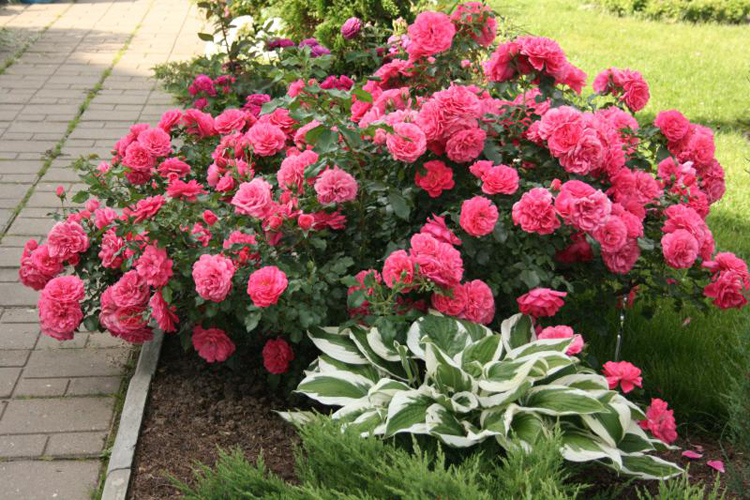
Today, the definition of "shrabs" includes many groups and types of garden roses. These include the famous Lambert roses, the legendary English roses of D. Austin's selection, Nostalgic shrubs (officially designated group), some varieties of French selection, German Cordes roses (Marchenrosen series), frost-resistant Canadian roses. But also ground cover roses belong to scrubs, which, in turn, are subdivided into several conditional subgroups depending on the shape and growth of the shoots.
As you can see, the class of scrubs is very diverse, so it is impossible to single out some general external features, however, there are some characteristics that are inherent in all scrubs. It blooms profusely and lasts from early summer to mid-fall - many varieties bloom in waves several times per season. Also, the general positive characteristics include good resistance to diseases and low temperatures. Although shrubs need winter shelter, this protection is not as solid as other types of roses.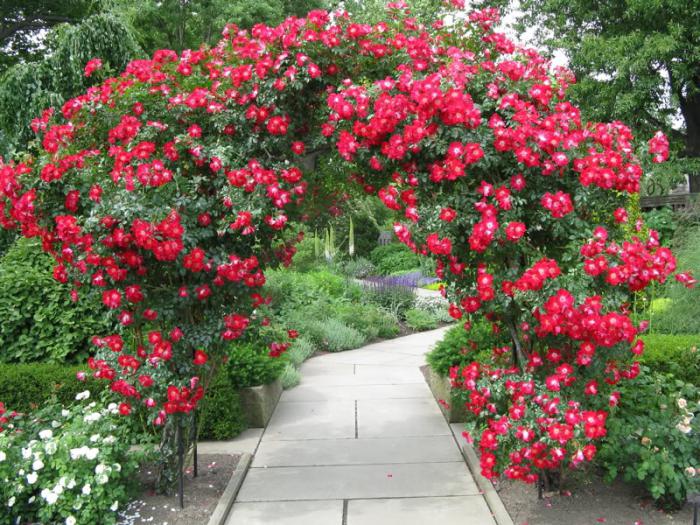
In terms of decorativeness, shrabs occupy a leading position in the classification of roses. Outwardly, they are very effective: the bushes are powerful and spreading, the crown is voluminous, the foliage is dense, the flowering is lush, the color of the buds is bright and varied, the aroma is pronounced. Shrubs are unpretentious in care, not particularly demanding on conditions, and they have the widest application: single, group plantings, landscape compositions, vertical gardening, hedges and much more, for which there is enough imagination.
Video "Description"
From the video you will learn a lot of new and interesting things about this type of shrub.
Rose varieties
Among the whole variety of varieties, the most popular shrabs can be distinguished, which are often found in the climate of our latitudes:
- Bonanza. An amazingly beautiful semi-pebble rose with large (up to 8 cm) orange-colored buds with a red border along the edge. Flowers are densely double, arranged in inflorescences, very fragrant. The bush is compact, the shoots are long (up to two meters), blooms many times from the beginning of summer until the first frost.
- Snow ballet. A very beautiful variety with multiple snow-white buds, collected in voluminous racemose inflorescences. The flowers are large (6-7 cm), double, bloom for a long time, have a pleasant delicate aroma.
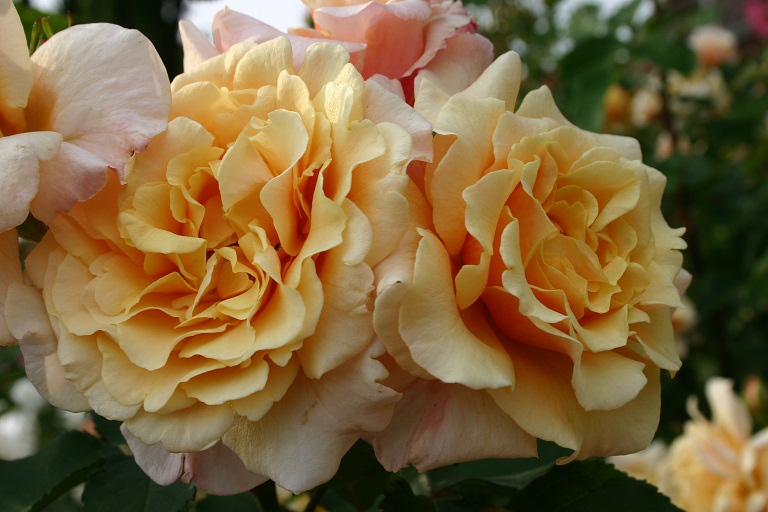
- Abraham Derby. Amazing roses of D.Austin with very beautiful buds of a delicate peach shade at the edges and slightly pinkish inside. The flowers themselves are large (up to 10 cm), densely double, long flowering - from June to mid-October. The variety is resistant to a number of diseases, perfectly tolerates frost.
- Simpati. Hybrid climbing rose with high winter hardiness. It blooms in large clusters, consisting of 7-10 bright scarlet or crimson buds, outwardly resembling a tea rose. The bush is voluminous, the lashes are long, if directed, they perfectly wrap around arches, gazebos and other architectural forms.
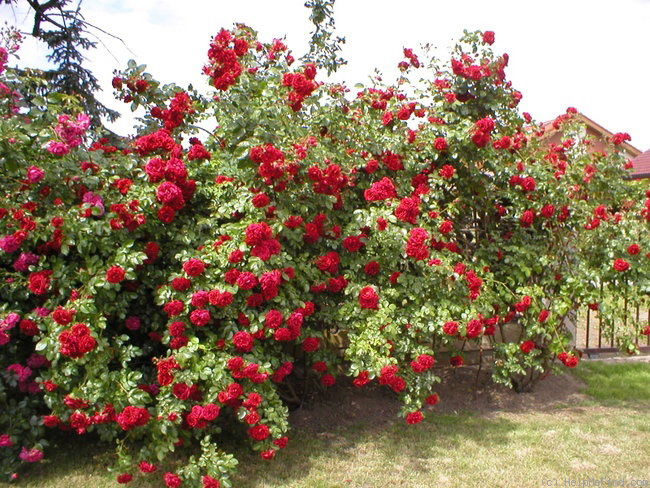
- Flamingant. Another climbing hybrid with large semi-double flowers of scarlet color. Blooms very early, blooms once a month. The bush is very decorative, during the flowering period it is literally covered with multiple inflorescences, consisting of 4-7 flowers. The rose perfectly tolerates frost, is not susceptible to disease.
- Morden Centennial. A hybrid of Canadian selection, it is distinguished by continuous long flowering in several passes. The flowers are large (up to 10 cm), terry, in the shade of crimson, in the sun, intense pink color, arranged in brushes of 5-7 pieces.
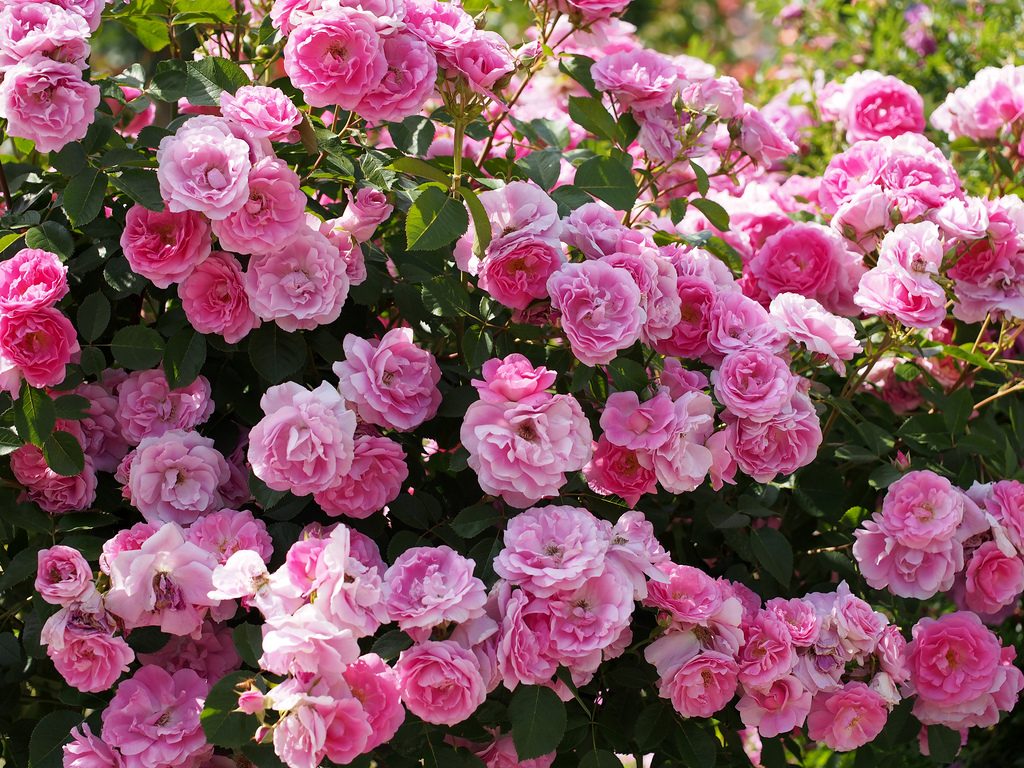
- Gazebo. It is resistant to frost, drought, weather and disease. The flowers are very spectacular, densely doubled, large (up to 12 cm), of an amazing golden-pink hue. Long-term flowering, buds keep their shape well and do not lose color.
Landing in open ground
Most varieties of scrubs are propagated by grafted seedlings; for some varieties, a vegetative method can be used. Planting roses can be carried out both in spring and in autumn, it all depends on the climate of the region and the variety of roses. In the southern regions, planting in autumn is possible, but in temperate and northern latitudes, spring planting should be preferred. You also need to take into account the varietal characteristics of the shrub, since there are more or less winter-hardy varieties.
For planting, you can use seedlings with an open root system or closed (in pots), while transplanting roses from a pot can be carried out throughout the summer season. As for grafted seedlings with open roots, they are usually sold and purchased in the fall. If the climate in your area is such that outdoor planting can only be done in the spring, then simply store the seedlings in a cool place until spring. They can be dug in or wrapped in a moisture-consuming material, for example, sphagnum moss, which will need to be periodically moistened.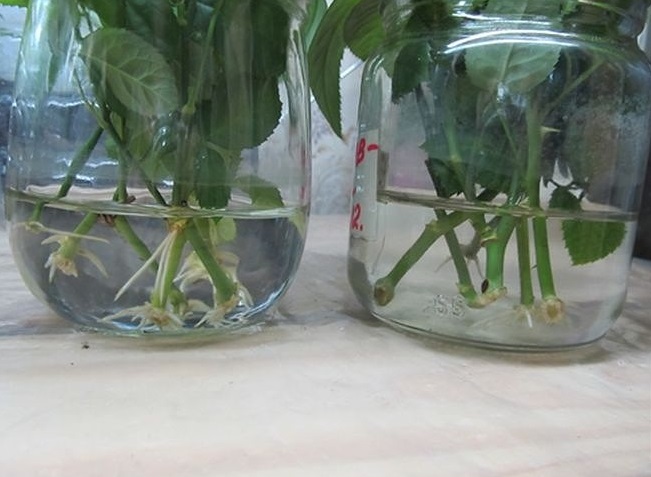
The place for planting roses should be open to the sun and protected from northerly winds and drafts. It is best to plant bushes on the south or southwest side of the site. Wetlands with a high level of groundwater should be avoided - roses do not tolerate excessive moisture. The quality of the soil for the scrubs is not important, the main thing is that the earth is not heavy and sour. Loose loamy soil with good drainage properties and neutral acidity is considered the most suitable for roses in this group. Organic fertilizers will help improve the quality of the soil: compost, humus, wood ash, which are brought in for digging.
When planting shrubs, keep in mind that many of them have a fairly powerful crown and root system, so if a transplant becomes necessary, it will be very difficult to do this. To avoid transplanting, you must initially clearly understand the purpose of the roses and immediately think over the arrangement of the bushes:
- undersized roses are used as borders, as the foreground of the composition - they can be planted at a distance of 30-40 cm;
- tall roses can decorate the center of the composition or become a bright accent of the landscape in a single planting - tall shrubs are planted one at a time or no more than three in a group, but then the distance between the bushes should be 1-2 m;
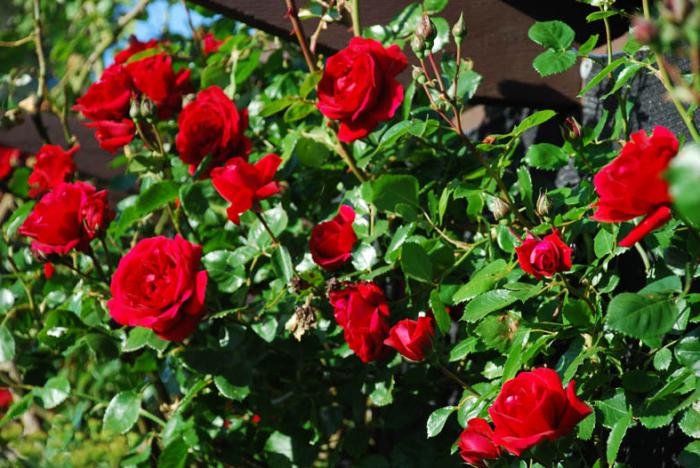
- the distance when planting bushes of medium height depends on the size of the crown, but on average by 1 square meter. area, you can place no more than 3 bushes.
Among the scrubs there are also climbing varieties and the so-called roses - fountains. Their planting depends on the size of the bush. "Fountains" have a beautiful spherical crown and look very impressive when planted in groups of 3, 5 bushes. Creeping or ground cover varieties can be planted almost everywhere: along walls, fences, verandas, arbors, decorative arches. They look great on slopes, cascading flower beds. In a word, among the scrubs, you can always choose a variety to your taste and plant greenery on any area.
Landing technology
From the technical point of view, planting any rose is about the same. Slight differences can be observed in the planting of seedlings with open and closed root systems. Plants from the pot are planted with a lump of earth, and with open roots placed in water for several hours so that the roots are saturated with moisture. For the rest, there is no difference, and planting rose scrubs in open ground occurs in the following order:
- the area intended for the rose, 2 weeks before planting, is dug up together with fertilizers: compost, humus, peat, ash - the amount of fertilizer depends on the composition of the soil;
- two weeks later, a pit 50x50 cm in size and 60 cm in depth is dug on the site - these are the average dimensions, and the exact depth and width of the pit is determined by the size of the root system of the seedling;
- the excavated earth is poured into the hole at a third of the depth, so that a small mound is formed;
- there you need to pour 0.5 buckets of water and a fertilizer solution for roses;
- when the water is absorbed, the seedling is placed vertically in the center of the pit, the roots are leveled - the plants from the pot are planted along with a lump of earth;
- cover the seedling with your hands, periodically compacting the soil, you need to make sure that the grafting site is deepened into the soil by 5-6 cm;
- after planting, the ground around the bush is tamped, and the bush itself is spud - if desired, the soil can be mulched.
For the first time, the bushes should be shaded with spruce branches or other material. Further care of roses consists in periodic watering, dressing, forming pruning.
How to grow on a windowsill
The class of scrubs is so diverse that there was a place in it for varieties of decorative roses that can be grown indoors on windowsills and balconies. In principle, any rose can grow indoors (pot, container), so it is not necessary to select special indoor roses, you can plant any variety you like. Despite the fact that such roses are quite miniature, they also have a beautiful bush shape and are famous for abundant flowering, and the bushes can bloom all year round.
Among the scrubs there are also miniature climbing roses: Red Cascade (bright red inflorescences), Hi-Ho (coral-red buds), Green Ice (terry buds white with a greenish tint), which look great in pots, hanging pots.
They quickly braid balconies, verandas, creating a pleasant coolness and shade. For the winter, they can be brought indoors, cut off, and in the spring they will quickly unravel again. In short, growing roses at home in pots is simple and very exciting.
The easiest way is to purchase an indoor rose from a flower shop, and then simply care for it and enjoy the abundant flowering. But if you are even a little interested in floriculture, then you will definitely want to plant and grow a beautiful flower with your own hands. If you decide to take this step and purchased a seedling, then you should not immediately transplant it into a new pot. First, let the plant get used to the indoor climate. You should also do with a seedling with open horses purchased from the market. Moisten the roots, wrap them, for example, in sphagnum moss (it keeps moisture well), and let the seedling stay in the room for two days.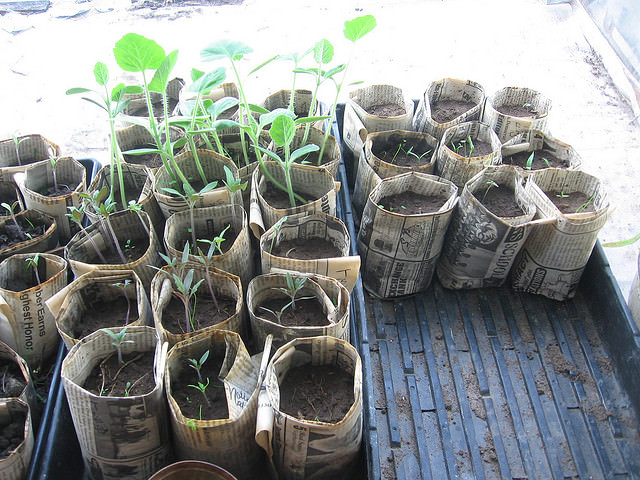
The rose should be planted in a special substrate, which is sold in the same flower shop. You can independently prepare the substrate from peat, coarse sand, humus and garden soil in equal parts.The rose does not tolerate stagnant water, so drainage must be laid at the bottom of the pot. A plant bought in a store, as a rule, is in a peat substrate, which must be cleaned from the roots during transplantation, taking care not to damage them. By planting a flower along with a peat substrate, you doom its roots to dry out quickly, which can adversely affect the development of the plant.
Like all roses, indoor varieties love the sun, so it is best to place the pot on a windowsill in the south side of the room. In winter, the flower needs to be highlighted. A lot of sun does not mean that the plants can be hot - the optimal temperature for roses is + 15-20 ° C. You need to water the flower as the soil dries. To keep the roots always moist, pour water into the pan of the pot. For irrigation, use settled or filtered water at room temperature. In the summer, as well as when the heating is on, the bushes need to be sprayed with water daily.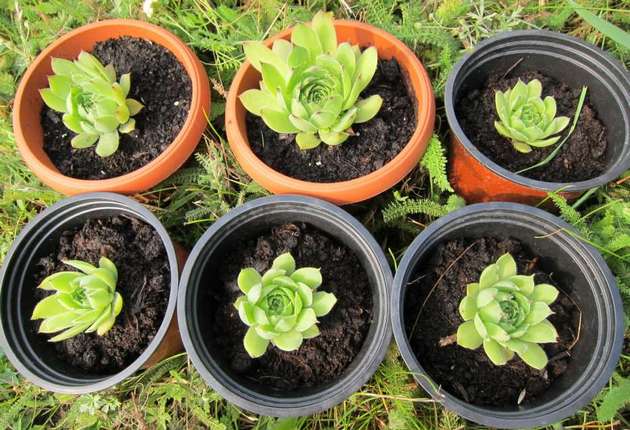
In general, caring for a room rose is no different from a garden rose. She also needs to be fed periodically. The rose loves organic matter, so more often indulge it with special complex fertilizers for roses with humates. During flowering, you need to feed at intervals of 2 weeks. Remember that the home rose also needs rest. In the fall, when the buds have faded, cut the shoots to a few centimeters, suspend feeding, water very rarely, just so that the shoots do not dry out. With the arrival of spring, resume watering and feeding, and the rose will immediately grow, and in a month it will give many buds.
Video "Grooming and Cropping"
From the video you will learn how to properly prune and care for this type of roses.



